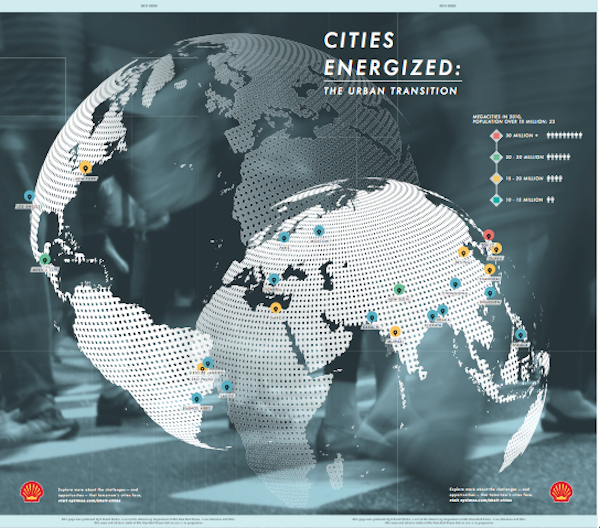
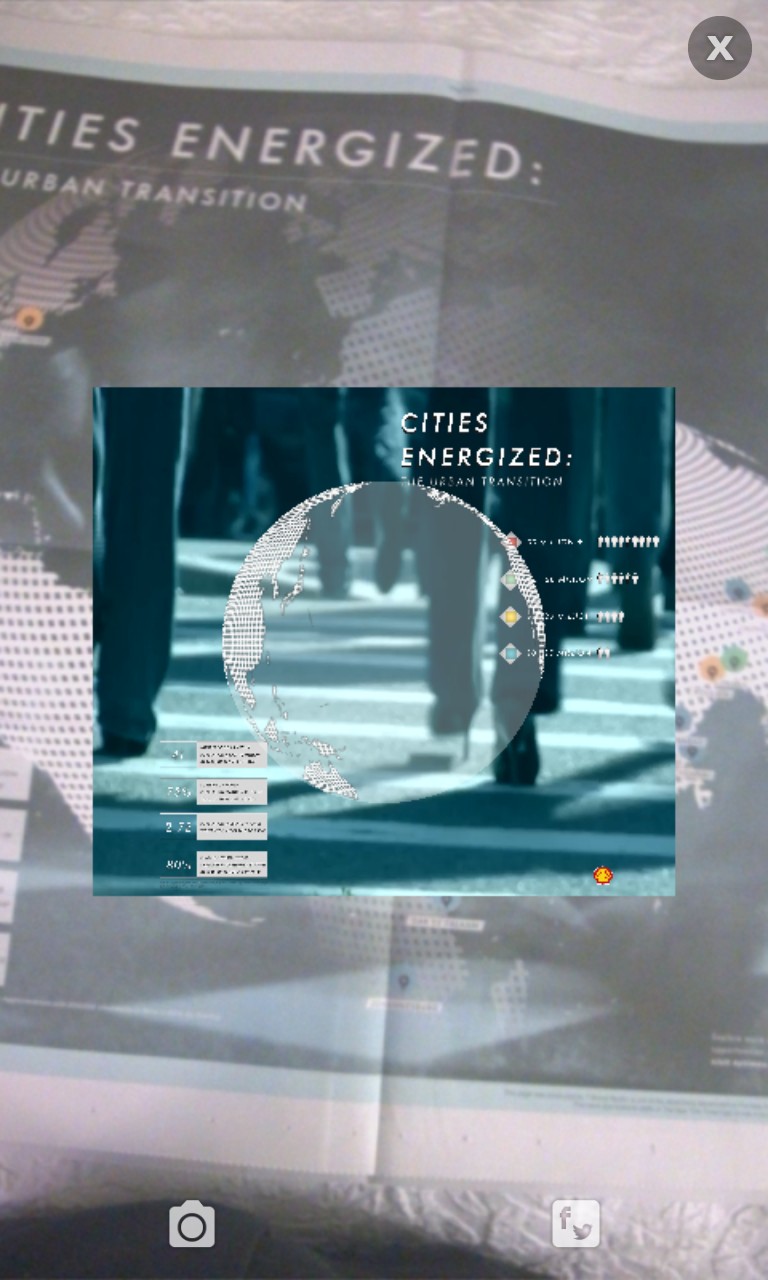
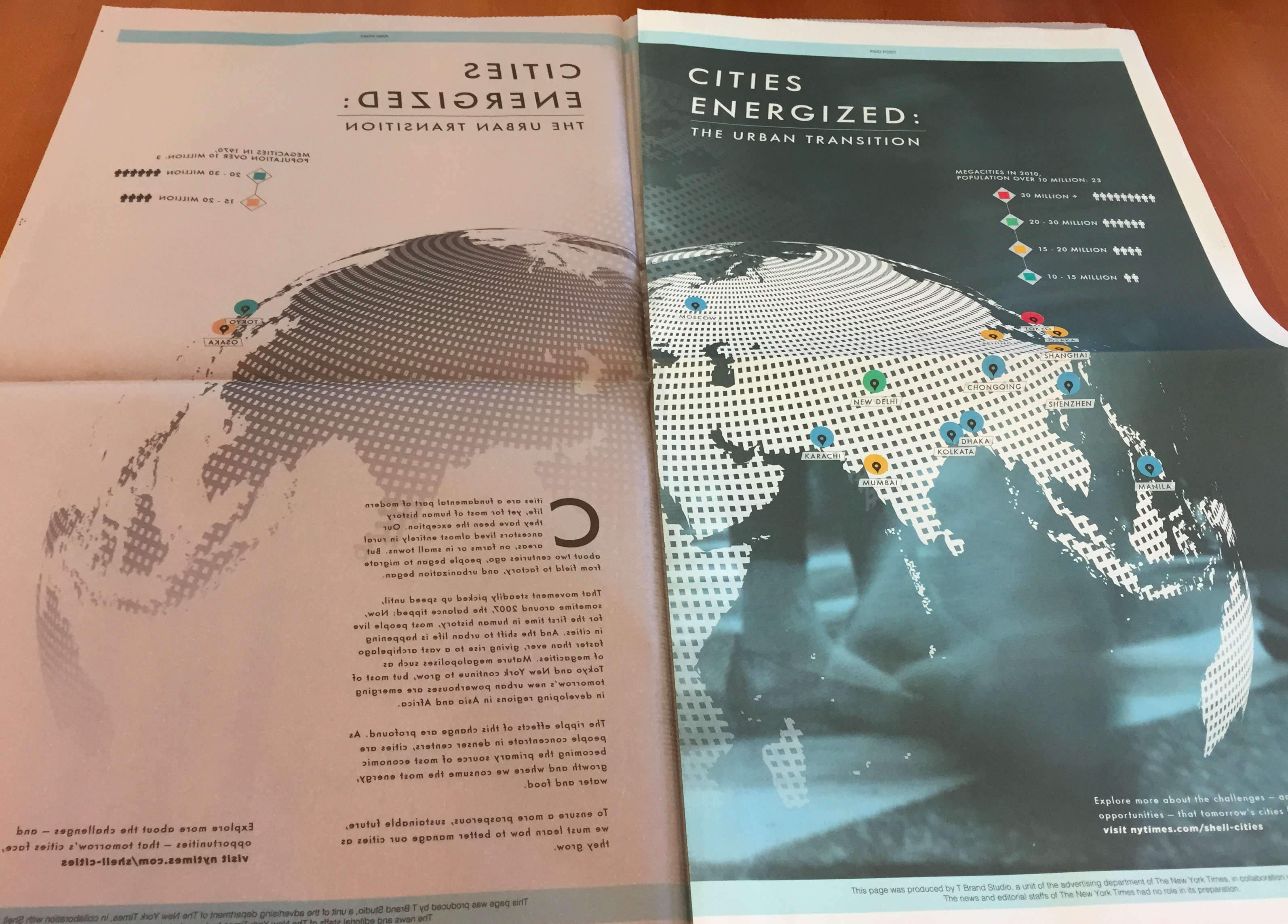
The ad is for Shell and it appeared both in print and online last week. Don’t call it an advertorial, please, because it isn’t. It is an 8-page section wrapped around home delivered copies of the Times.
The content is about the organization of the world’s population, an informative report that does not sell Shell products per se, while exposing the brand. It is sophisticated, well crafted and can provide us with a model to study for such future native ads in print.
While the ad is historic for its inclusion in print, there is more. In what the Times called “icing on the cake,” the print ads are enhanced by augmented reality, so that people using the Blippar app can initiate a video by holding their phone over the page.
I am so happy to see this. But, also, because the Times is such a respected publication, that it will inspire other publishers and editors to consider the strategy.
We have seen such ads online for quite some time, but to see in print is a different story. Legacy, we know, is all about what we do with the print product. Digital products do not have the ghost of a founder of a century ago breathing over their necks.
Readers are smart and I doubt that any Times’ readers will think that the Shell ad is editorial content.
Shell, as it happens, seems to be the ice breaker, the pioneer in these type of ads. The Washington Post also ran a print native ad in October, also for Shell. Unlike print advertorials of the past, the content did not appear as an insert or in standard ads; instead, it was integrated among editorial stories on the page featuring background shading and ‘sponsor generated content’ labeling.
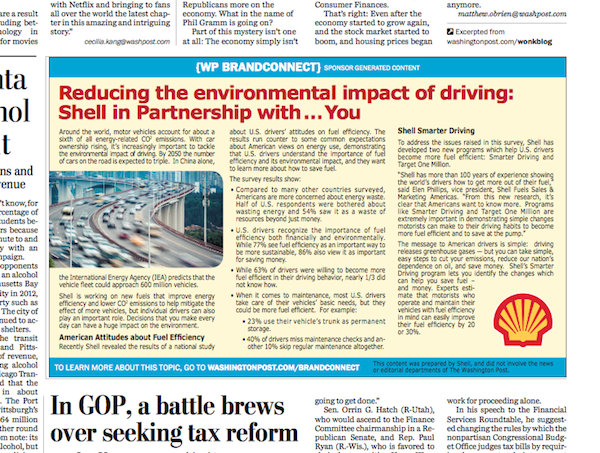
The Washington Post: first native ad, also for Shell: ad was not an insert, but it was integrated among editorial stories on the page featuring background shading and ‘sponsor generated content’ labeling.
The view from the Netherlands
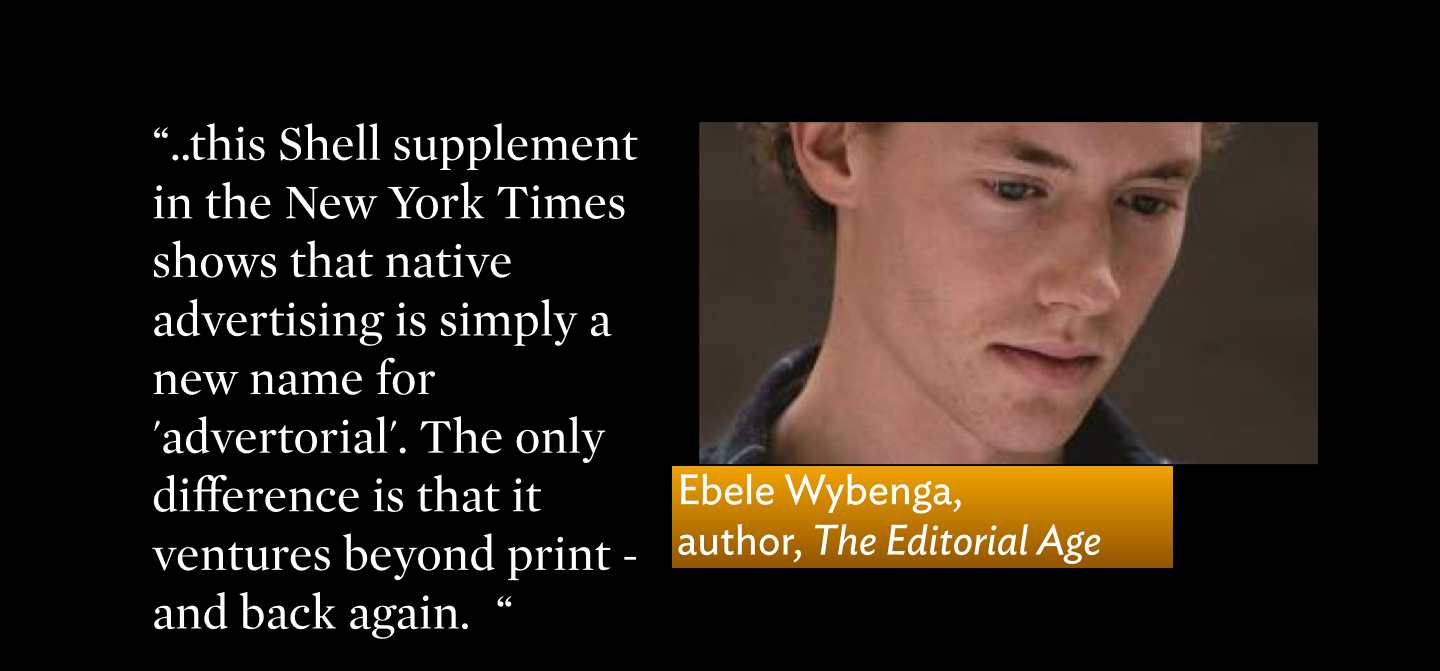
Ebele Wybenga, the young Dutch author of The Editorial Age, calls this type of advertising we have seen in The Times last week as “branded journalism”. We chatted with Ebele right after the Shell ad appeared in the Times.
Here is my chat with Ebele:
Mario:
Ebele, what do you think of the Shell native ad in the Times?
Ebele:
First of all, this Shell supplement in the New York Times shows that native advertising is simply a new name for 'advertorial'. The only difference is that it ventures beyond print – and back again.
Mario:
What do you think of the term native ad for print?
Ebele:
I like the expression 'worthy of our real estate' used by Meredith Levien, executive vice president of advertising for the Times. News media should care deeply about making advertorials interesting and worthy of the readers' attention. That's the big challenge. After all, have you ever heard anybody say: 'today I read such an amazing advertorial'?
Mario:
Has Shell branded itself properly for this ad?
Ebele:
I appreciate the unmissable Shell branding in the ad. In 2011 Shell published a supplement called Energy Future, sent along with Dutch broadsheet NRC Handelsblad. It had the tiniest Shell logo and was clearly designed to trick the reader into thinking the supplement was independent. This tactic is damaging to both advertiser and newsbrand. I'm glad to see the NYT is not going down this road.
Mario:
How is this type of advertising progressing in The Netherlands?
Ebele:
Over here, the acceptance is growing, but most native advertising is still very boring and not on par with independent editorial stories at all.
Of related interest
Highlight:
This week, Shell and The New York Times launched “Cities Energized: The Urban Transition.” It’s the newest native ad by T Brand Studio, the branded content arm of the Times‘ advertising department, and it marks the first time a Times paid post has appeared in print.
Sponsored messages cuddling up to editorial content
https://www.garciamedia.com/blog/psponsored_messages_cuddling_up_to_editorial_content_p
Mario Garcia: Poynter Master Class
‘Desperation can be your best ally’ and other lessons from Mario Garcia’s master class
http://www.poynter.org/mediawire/top-stories/283855/desperation-can-be-your-best-ally-and-other-lessons-from-mario-garcias-master-class/